Python画双摆
微小冷 人气:01.双摆问题
所谓双摆,就是两个连在一起的摆。
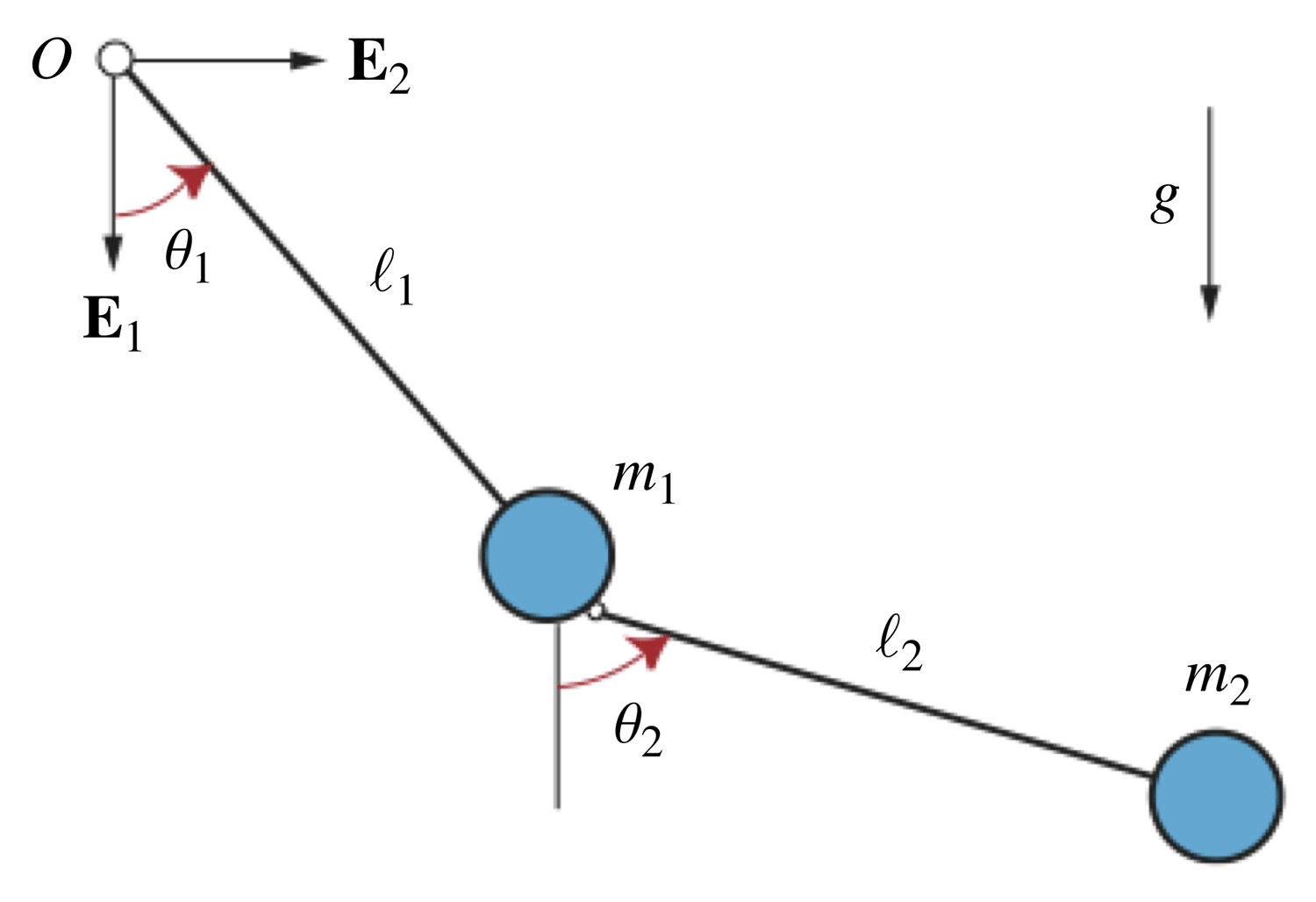
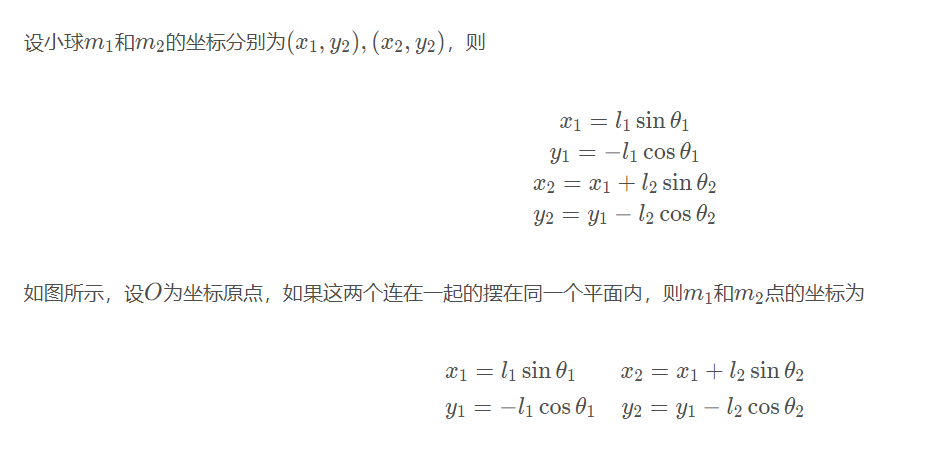
接下来本来是要推公式的,考虑考虑到大家可能会有公式恐惧症,同时又喜欢看图,所以把公式挪到后面。
所以,只需知道角速度的微分方程,就可写出对应的代码,其方程如下:

从而转为代码得到:
# 其中,lam,mu,G_L1,M为全局变量 def derivs(state, t): dydx = np.zeros_like(state) th1,om1,th2,om2 = state dydx[0] = state[1] delta = state[2] - state[0] cDelta, sDelta = np.cos(delta), np.sin(delta) sTh1,_,sTh2,_ = np.sin(state) den1 = M - mu*cDelta**2 dydx[1] = (mu * om1**2 * sDelta * cDelta + mu * G_L1 * sTh2 * cDelta + mu * lam * om2**2 * sDelta - M * G_L1 * sTh1)/ den1 dydx[2] = state[3] den2 = lam * den1 dydx[3] = (- mu * lam * om2**2 * sDelta * cDelta + M * G_L1 * sTh1 * cDelta - M * om1**2 * sDelta - M * G_L1 * sTh2)/ den2 return dydx
接下来根据微分方程的解,便可进行绘图。
# 这段代码用于设置初值,并调用integrate求解微分方程组 import numpy as np import scipy.integrate as integrate G = 9.8 L1,L2 = 1.0, 1.0 G_L1 = G/L1 lam = L2/L1 #杆长度比L2/L1 mu = 1.0 #质量比M2/M1 M = 1+mu # 生成时间 dt = 0.01 t = np.arange(0, 20, dt) th1,th2 = 120.0, -10.0 #初始角度 om1,om2 = 0.0, 0.00 #初始角速度 state = np.radians([th1, om1, th2, om2]) # 微分方程组数值解 y = integrate.odeint(derivs, state, t) # 真实坐标 x1 = L1*sin(y[:, 0]) y1 = -L1*cos(y[:, 0]) x2 = L2*sin(y[:, 2]) + x1 y2 = -L2*cos(y[:, 2]) + y1
至此,就得到了所有位置处的坐标,从而可以观察到双摆的轨迹如图所示
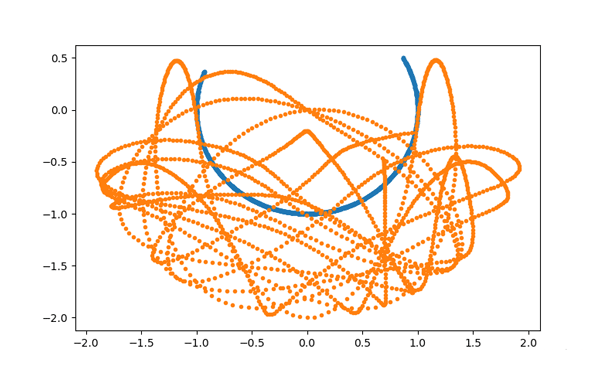
绘图代码为:
import matplotlib.pyplot as plt plt.scatter(x1,y1,marker='.') plt.scatter(x2,y2,marker='.') plt.show()
若将时间设置得长一点,然后在画图的时候更改一下颜色,就会看到双摆的运动区间,可见自然界还是挺有情怀的
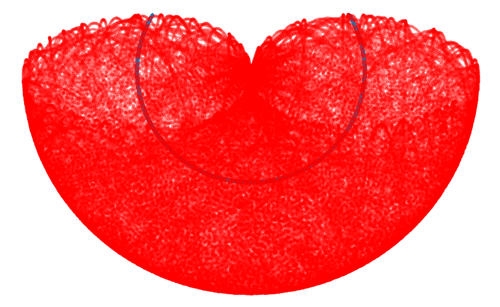
其绘图代码为:
plt.plot(x1,y1,marker='.',alpha=0.2, linewidth=0.2)
plt.plot(x2,y2,marker='.',alpha=0.2, linewidth=2, c='r')
plt.axis('off')
plt.show()当然,也可以将其运动轨迹以一种三维的形式绘制出来
ax = plt.gca(projection='3d') ax.plot3D(t,x1,y1,linewidth=1) plt.show()
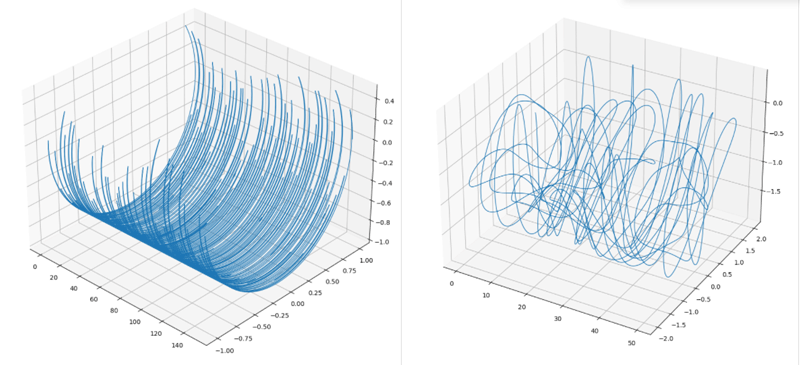
额……好吧,看来并没有什么情怀。
但是,如果把这两个小球分别当作两个星球,而我们又在一颗星球上,那么所观测到的另一颗星球的运动大致如下,不出意外是个圆,毕竟圆形二者之间的距离是恒定的。
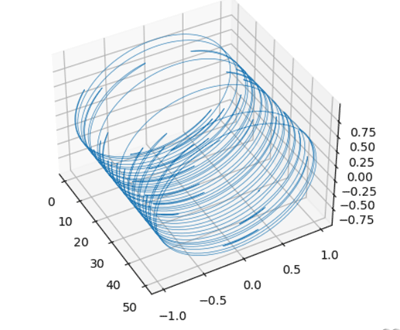
绘图代码为:
ax = plt.gca(projection='3d') ax.plot3D(t,x2-x1,y2-y1,linewidth=0.5) plt.show()
如果更改一下初值,则图形将有如下变化
初值设为:
th1,th2 = 0, 0 #初始角度 om1,om2 = 120.0, 108.00 #初始角速度
2.运动过程
最后,还是传统技能,绘制一下双摆的运动过程如下:

代码为:
import matplotlib.animation as animation
# 下面为绘图过程
fig = plt.figure(figsize=(12,12))
ax = fig.add_subplot(111, autoscale_on=False, xlim=(-2, 2), ylim=(-2, 2))
ax.set_aspect('equal')
ax.grid()
line, = ax.plot([], [], 'o-', lw=2)
time_template = 'time = %.1fs'
time_text = ax.text(0.05, 0.9, '', transform=ax.transAxes)
# 初始化图形
def init():
line.set_data([], [])
time_text.set_text('')
return line, time_text
def animate(i):
thisx = [0, x1[i], x2[i]]
thisy = [0, y1[i], y2[i]]
line.set_data(thisx, thisy)
time_text.set_text(time_template % (i*dt))
return line, time_text
ani = animation.FuncAnimation(fig, animate, range(1, len(y)),
interval=dt*1000, blit=True, init_func=init)
ani.save("dua_1.gif",writer='imagemagick')
plt.show()3.公式推导过程
双摆的动能和势能分别为:


根据拉格朗日方程
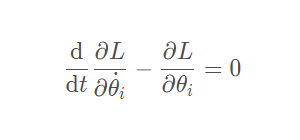
则有:

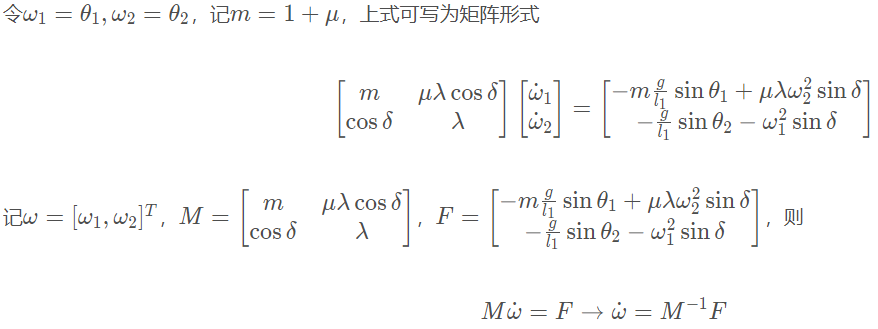
其中,

展开可得则:

加载全部内容